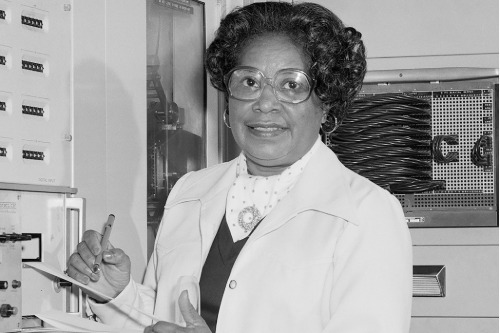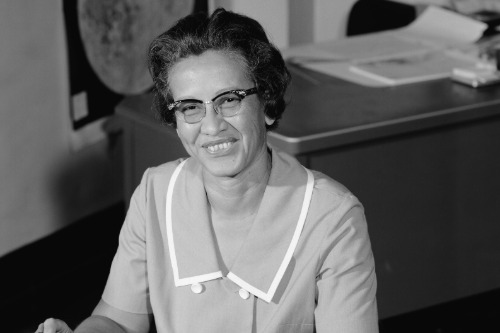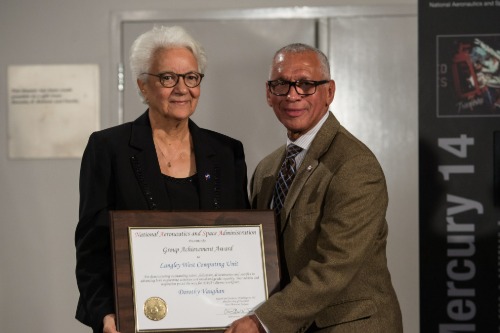The Space Race of the 1960s was a monumental period in history. The competition between the United States and the Soviet Union to dominate space exploration captured the world’s attention, but there is a lesser-known story buried within the space program’s success: the pivotal role of Black women at NASA. These women were mathematicians, engineers, and scientists who helped launch the U.S. into the space age, yet for years, their contributions went largely unrecognized. Their stories are now coming to light, and it’s time to give credit where credit is due.
In this story, we’ll explore how these remarkable women navigated the challenges of segregation, racism, and sexism to contribute to one of humanity’s greatest achievements. Their courage, brilliance, and determination were essential to the Apollo missions, the moon landing, and the very foundation of space exploration.
The Hidden Figures of NASA

When most people think of NASA’s early space missions, they envision astronauts like John Glenn and Neil Armstrong, but behind every successful launch were the unsung heroes who worked tirelessly behind the scenes. Among them were the Black women whose mathematical genius and technical skills were integral to mission success. They were the human computers—the “calculators”—who ran the complex equations needed to launch spacecraft into orbit, safely return astronauts to Earth, and calculate trajectories to the moon.
Katherine Johnson, Dorothy Vaughan, and Mary Jackson are the names most commonly associated with these groundbreaking women, largely thanks to Margot Lee Shetterly’s book Hidden Figures and the subsequent film adaptation. But there were many more who contributed in vital ways. These women weren’t just working behind the scenes; they were breaking barriers in a world that was not yet ready to acknowledge their talent.
Katherine Johnson, perhaps the most famous of these women, was a brilliant mathematician whose calculations were critical to the success of NASA’s early missions, including John Glenn’s orbital flight in 1962. Johnson’s work helped prove that humans could survive in space and helped lay the groundwork for the Apollo 11 mission to the moon. Her story, like many others, was hidden for decades, overshadowed by the men in charge and a society that undervalued Black women’s contributions.
The Struggles They Faced

It’s impossible to discuss the achievements of these women without acknowledging the hardships they faced. Working at NASA in the 1950s and 60s was not easy for anyone, but for Black women, it was a constant battle against racism and sexism. The culture of segregation that was still prevalent in much of the United States had its own rules at NASA—rules that limited Black employees to certain areas and restricted them from interacting freely with their white colleagues.
Even within the NASA offices, women were often assigned to the most tedious and repetitive tasks. Black women, especially, were relegated to the most menial jobs, expected to work as “human computers” rather than being recognized for their potential to drive innovation. Yet, these women refused to be limited by their circumstances.
Dorothy Vaughan, one of the first Black women to be promoted to a supervisory role at NASA, was an expert programmer in the early days of electronic computing. She taught herself and her colleagues how to use the newly introduced IBM computers, which were critical in the space race. At a time when computers were changing the world, Vaughan saw the future of technology long before most others. Yet, she faced the constant challenge of fighting for recognition in a space that was largely white and male.
Mary Jackson, another trailblazer, fought for years to be promoted to an engineering position. Initially hired as a mathematician, she wanted to become an aerospace engineer. The only problem? The engineering courses required for promotion were held in segregated schools, and Jackson needed a special court order to attend. Undeterred, she earned her engineering degree and went on to become NASA’s first Black female aerospace engineer.
The struggles of these women didn’t end with their work at NASA. They had to fight not just for recognition within the organization but also for basic respect and dignity in a society that often denied them both. But they did not let this stop them. They worked with quiet resilience, determined to contribute in ways that would change history, even if they were never given the credit they deserved.
Their Impact and Legacy

Despite the obstacles they faced, the impact of these women on the space race and the world at large is immeasurable. The story of their triumphs is one of perseverance, courage, and a fierce determination to prove that Black women, too, had the brilliance and ingenuity to push humanity forward.
The work of these women laid the foundation for NASA’s success. Katherine Johnson’s calculations directly impacted the trajectory of Alan Shepard’s flight, the first American in space, and John Glenn’s orbital flight. Dorothy Vaughan’s contributions to the development of computer programming allowed NASA to embrace the technological revolution that would later propel the U.S. to the moon. And Mary Jackson’s engineering expertise helped design the planes and spacecraft that made space exploration possible.
Their legacy doesn’t just live on in the history books—it lives on in the thousands of women and men who continue to break barriers in science, technology, engineering, and mathematics (STEM) fields. Their stories serve as a powerful reminder that talent knows no gender, no race, and no boundaries.
In recent years, there has been a concerted effort to ensure these women are no longer hidden in the background of history. Schools, scholarships, and institutions are honoring their contributions, and their stories are being taught to future generations. In 2015, President Barack Obama awarded Katherine Johnson the Presidential Medal of Freedom, acknowledging her years of service and her profound impact on space exploration. In 2019, NASA named its new headquarters building in Washington, D.C. after Mary Jackson, forever cementing her legacy in the annals of space history.
These women represent not just the triumph of the human spirit but also the perseverance of a community often pushed to the margins. Their ability to push forward despite incredible odds is a testament to their strength and brilliance. As more people learn about their contributions, their legacy continues to inspire new generations of women—particularly women of color—who dream of following in their footsteps.
Why It’s Important to Remember Their Stories
In our modern era, the contributions of Black women in STEM fields are still often overlooked. The stories of these women remind us that history is not just written by the famous figures who stand at the front of the room but also by the countless unsung heroes who work in the background. By remembering the Black women who fueled NASA’s Space Race, we ensure that their invaluable contributions are celebrated and that future generations can draw inspiration from their determination.
Their stories are crucial to understanding the full history of the space race and of the fight for racial and gender equality in the U.S. They show us that no matter what barriers society may place in front of us, perseverance, talent, and hard work can overcome almost anything.
As we look up at the stars today, we owe so much to the Black women who helped get us there. They didn’t just fuel the NASA space race—they ignited the spark that continues to light the way for future explorers, scientists, and innovators.
